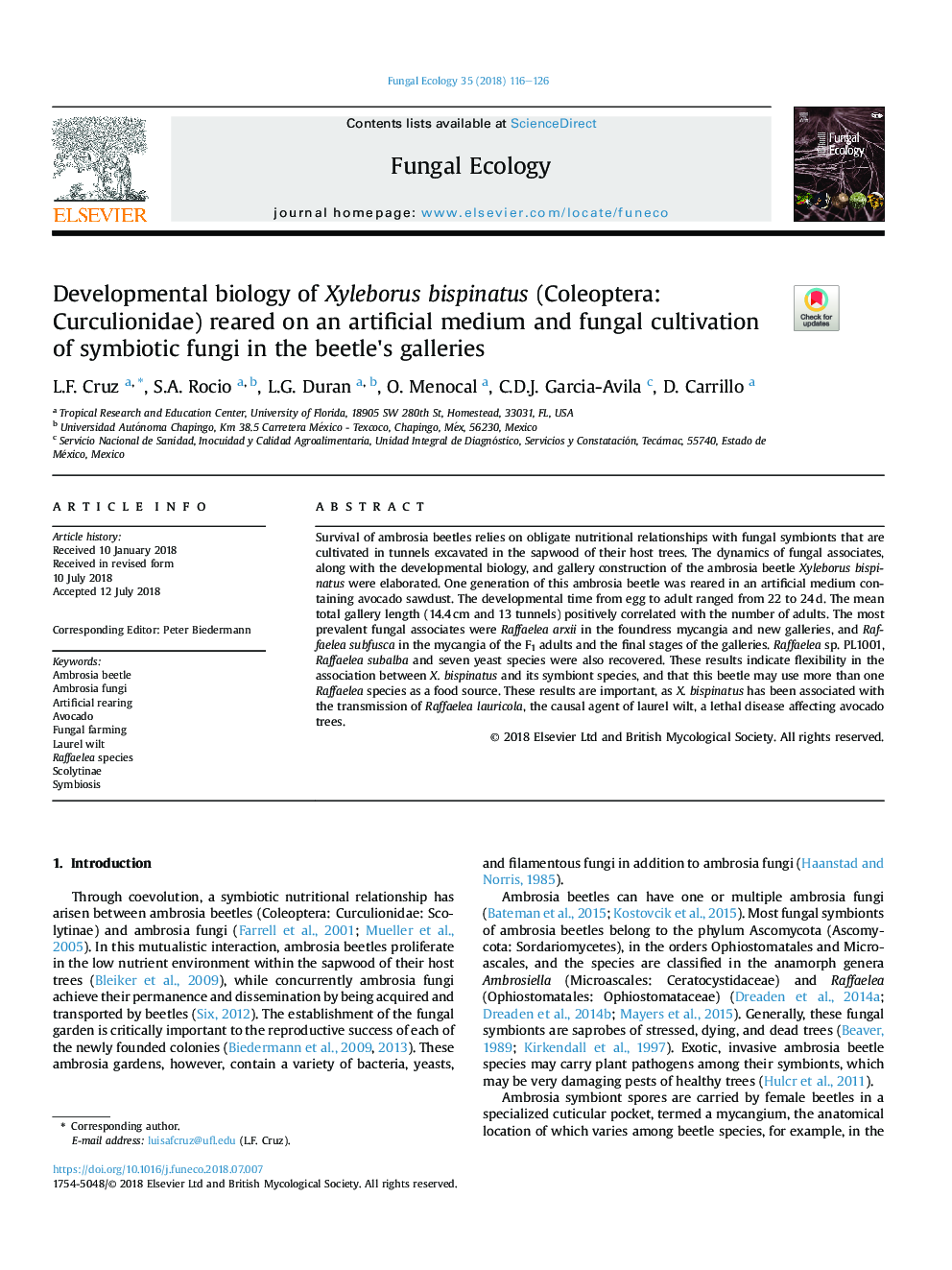| Article ID | Journal | Published Year | Pages | File Type |
|---|---|---|---|---|
| 9954307 | Fungal Ecology | 2018 | 11 Pages |
Abstract
Survival of ambrosia beetles relies on obligate nutritional relationships with fungal symbionts that are cultivated in tunnels excavated in the sapwood of their host trees. The dynamics of fungal associates, along with the developmental biology, and gallery construction of the ambrosia beetle Xyleborus bispinatus were elaborated. One generation of this ambrosia beetle was reared in an artificial medium containing avocado sawdust. The developmental time from egg to adult ranged from 22 to 24â¯d. The mean total gallery length (14.4â¯cm and 13 tunnels) positively correlated with the number of adults. The most prevalent fungal associates were Raffaelea arxii in the foundress mycangia and new galleries, and Raffaelea subfusca in the mycangia of the F1 adults and the final stages of the galleries. Raffaelea sp. PL1001, Raffaelea subalba and seven yeast species were also recovered. These results indicate flexibility in the association between X. bispinatus and its symbiont species, and that this beetle may use more than one Raffaelea species as a food source. These results are important, as X. bispinatus has been associated with the transmission of Raffaelea lauricola, the causal agent of laurel wilt, a lethal disease affecting avocado trees.
Related Topics
Life Sciences
Agricultural and Biological Sciences
Ecology, Evolution, Behavior and Systematics
Authors
L.F. Cruz, S.A. Rocio, L.G. Duran, O. Menocal, C.D.J. Garcia-Avila, D. Carrillo,
